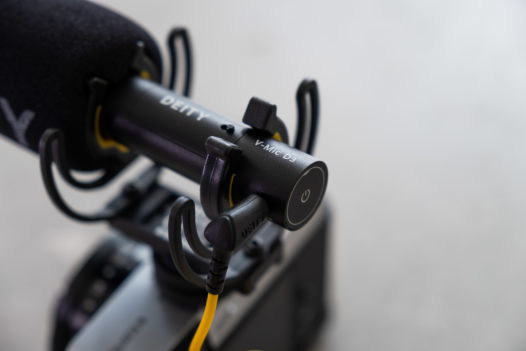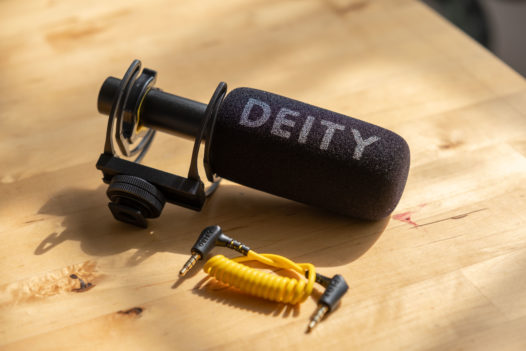V-Mic D3 The classic


Quick Look
The classic on-camera microphone reimagined
With a best-in-class build, the D3 reliably delivers professional audio every time you turn on your camera.
- Compatible with Cameras and Mobile Devices
- Auto-Configuring 3.5mm TRRS Output
- Power Switch with LED & Auto On/Off
- Low Noise & Distortion, High SNR
- Detachable Shoe/Pole/Tripod Shockmount
- Simple Operation with No Controls
- Ideal for Run-And-Gun Creators
What do you get in the box?
- 1x V-Mic D3
- 1x Foam Windscreen
- 1x Rycote Adjustable Cold-Shoe Shockmount
- 1x Smart TRRS to TRRS Coiled Cable

All V-Mic D3 features
Broadcast Quality Sound
Using the same 14mm prepolarized condenser capsule as the D3 Pro, the D3 delivers superior sound quality on a budget. Its supercardioid pickup pattern captures audio that will surely make it through to the final mix of your video.

Low Self-Noise + Low Distortion
Unlike many 3.5mm microphones on the market, the D3 is able to deliver XLR-quality audio due to its low self-noise circuitry and extremely low distortion THD (0.1%).

Up to 200 Hours of Battery Life
The V-Mic D3 uses a single AAA battery for power and features a one-button on/off switch. When the camera or device is powered on, the D3 automatically activates. The same is true when the camera or device is turned off. Never worry about accidentally leaving your mic on again.

Unmatched Build Quality
A uni-body aluminum metal chassis means the D3 is as rugged as they come with no weak spots to flex or bend after prolonged use.

Smart 3.5mm Output
As soon as you plug the V-Mic D3 into a 3.5mm microphone jack of a device, its microprocessor shakes hands with the device, allowing you to carry fewer adapter cables.*

These Deity mics
are amazing value
specifications
| Transducer Principles | Prepolarized Condenser |
| Pickup Pattern | Supercardioid |
| Frequency Range | 50Hz ~ 20kHz |
| Output Impedance | 200Ω |
| Sensitivity | -35±2dB re 1V/Pa @1KHZ |
| Signal to Noise Ratio | 78dB |
| Dynamic Range | 114dB |
| Max SPL | 130dB SPL (@1KHZ, 1%THD into 1kΩ) |
| THD | ≤0.1% |
| Battery Type | Single AAA Battery |
| Output Port | Smart 3.5mm TRRS |
| Housing Material | Aluminum Metal |
Support
If you look on your shockmount you will see a sticker that features your microphone’s serial number. To register your microphone go to our warranty form.
It’s possible the device you’re trying to use either does not supply 3v bias voltage or the ground pin of the 3.5mm jack is out of spec and does not align with the ground pin on a TRRS plug. Make sure your device supplies bias voltage and try to use a TRS to TRS cable.
It means that your device requires a legacy 3.5mm TRS to TRS cable, much like the “AUX” cable you might use to plug your iPod into your car radio.